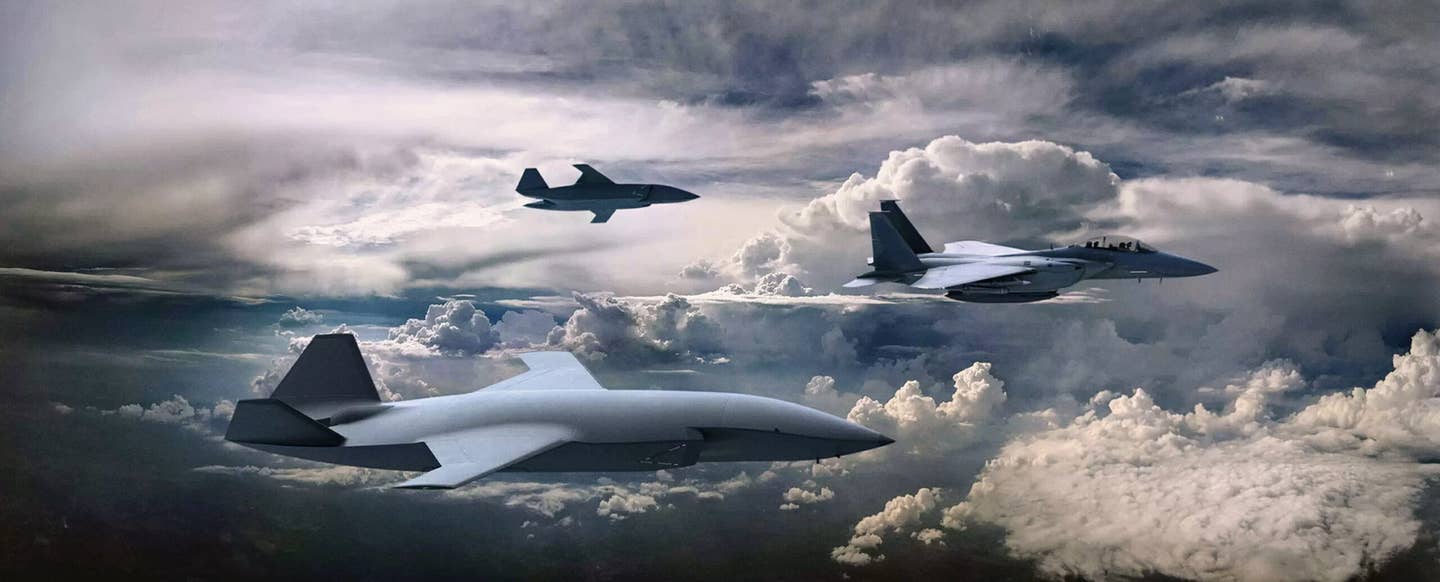Air Force Looking To Manned, Unmanned Aircraft Teaming
Teaming up formations of manned aircraft and drones ‘opens up a whole range of tactics that we currently would not contemplate,’ Air Force Secretary Frank Kendall said Wednesday.

A Skyborg conceptual design for an unmanned combat aerial vehicle. [US Air Force]
U.S. Air Force Secretary Frank Kendall is starting programs for uncrewed combat aircraft as a cost-effective way to build mass as the service looks to a future of manned and unmanned aircraft teaming.
"It's imperative that they be cheap, relative to the manned aircraft," Kendall said Wednesday during an online event with the Center of the Loyal Wingman program, under development at New American Security.
"There's enough technology in existence from programs we've already conducted that convinces me that that's not a crazy idea, that it's something that we can achieve."
U.S. Air Force Secretary Frank Kendall
"One of the reasons I've gone down this road is, if we only do very expensive aircraft for the Air Force, we're not going to be able to afford an Air Force anywhere near the size that we either need or have today," he said. "These have got to be cheaper platforms."
Kendall's comments are the latest outlining the Air Force's plans to add to its arsenal remotely piloted air combat vehicles that may be networked and controlled by piloted aircraft. Last month, the service chief also confirmed that the Air Force would ask for funding for two classified, remotely piloted air combat vehicles in the next defense budget.
"This is about all I'm ever going to say publicly about this," Kendall said Wednesday.
"When I look at what's been done by various programs … I think the technologies are there now where we can talk about a formation, if you will, of a manned aircraft controlling multiple unmanned aircraft," he said, pointing to the Loyal Wingman program.
About the Loyal Wingman Program
Loyal Wingman, currently under development by Boeing, deploys unmanned aerial vehicles using artificial intelligence that are capable of being outfitted with weapons systems as support to manned aircraft.
"They operate as a team. They operate as a formation, and they're under the control of the manned aircraft—the crewed aircraft," Kendall said. "That commander for that formation calls the play. Then, with a reliance on a high degree of autonomy, the other members of the formation operate in a way which is optimized against the threat that they see."
Under the concept, the unmanned aircraft are attritable and expendable, Kendall said.
"That opens up a whole range of tactics that we currently would not contemplate because we'd be sacrificing manned aircraft and we're not going to do that," Kendall said.
"There's enough technology in existence from programs we've already conducted that convinces me that that's not a crazy idea, that it's something that we can achieve," he added. "There's a question of how much, at what scale, and to what extent that we're going to have to work on, but I want to move forward on this in a way which gets us to real operational capability."
Last month, Kendall said was going to include in the fiscal 2023 defense budget two classified unmanned air combat vehicles designed to work with fighter aircraft, such as the Next Generation Air Dominance fighter, F-22 or the F-35, as well as bombers like the B-21.
The Air Force is already on the path to teaming of piloted and remotely crewed aircraft. This past summer, the service announced that its experimental autonomy core system Skyborg was on track to advance to a program of record by Fiscal Year 2023.

Subscribe to Our Newsletter
Get the latest FLYING stories delivered directly to your inbox






